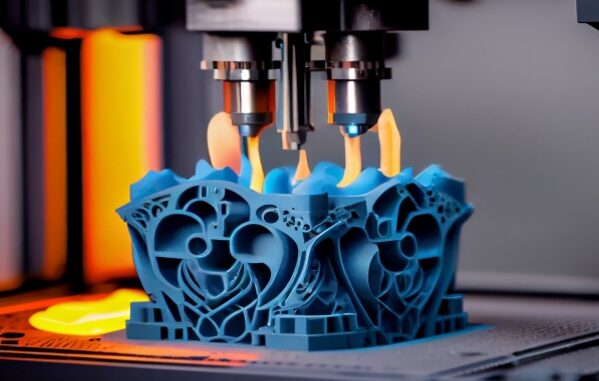
Additive manufacturing (AM) offers numerous benefits in the context of wind turbine manufacturing,
impacting various aspects of production, design, maintenance, and sustainability. Here are some of the key advantages:








1. Design Flexibility and Innovation
Complex Geometries: AM allows for the creation of complex and optimized designs that are difficult or impossible to achieve with traditional manufacturing methods. This includes internal lattice structures, aerodynamic shapes, and integrated features.
Customization: Components can be tailored to specific requirements, allowing for custom-fit parts that enhance turbine performance and efficiency.
2. Material Efficiency and Waste Reduction
Reduced Waste: AM is an additive process, meaning material is only used where needed, significantly reducing waste compared to subtractive manufacturing methods.
Material Savings: Efficient use of materials lowers costs and reduces the environmental footprint of manufacturing.
3. Cost-Effective Production
Lower Tooling Costs: AM eliminates the need for expensive molds and tooling, particularly beneficial for low-volume and custom parts.
Reduced Inventory: On-demand production reduces the need for large inventories of spare parts, lowering storage costs and waste.
4. Speed and Time Efficiency
Rapid Prototyping: AM enables quick production of prototypes for testing and validation, accelerating the design and development cycle.
Short Lead Times: Faster production times for parts, especially custom and replacement components, lead to shorter lead times and quicker deployment.
5. Enhanced Performance and Durability
Optimized Structures: The ability to create lightweight yet strong structures improves overall turbine performance and longevity.
Improved Functionality: Integration of multiple functions into a single part (e.g., cooling channels within a component) enhances functionality and efficiency.
6. Sustainability and Environmental Impact
Eco-Friendly Materials: Potential use of recyclable or biodegradable materials reduces the environmental impact.
Energy Efficiency: Lightweight components contribute to overall energy efficiency, both in manufacturing and operational phases.
Localized Production: On-site or near-site production reduces transportation emissions and associated costs.
7. Maintenance and Repair Advantages
On-Demand Replacement Parts: Production of spare parts on demand minimizes downtime and reduces the need for large inventories.
Field Repairs: AM can be used for in-situ repairs, applying patches or creating replacement sections on-site, which is particularly useful in remote locations.
Customization for Repairs: Custom-fit repair components can be produced to address specific damage or wear, enhancing repair effectiveness.
8. Supply Chain Simplification
Localized Manufacturing: Reducing dependency on distant suppliers by producing components locally, which can simplify supply chains and mitigate risks associated with long lead times and transportation.
Streamlined Logistics: Fewer logistical challenges and costs associated with transporting large or complex components.
9. Innovation and Competitive Advantage
Rapid Innovation Cycles: The ability to quickly iterate and test new designs fosters innovation and keeps companies at the forefront of technology.
Market Differentiation: Companies that leverage AM can differentiate themselves through advanced designs, faster delivery times, and superior performance.
10. Scalability and Flexibility
Scalable Production: AM can easily scale from producing a single prototype to full-scale production runs, providing flexibility in manufacturing.
Adaptability: AM can adapt to changing market demands and technological advancements without the need for significant retooling.
By leveraging the benefits of additive manufacturing, the wind turbine industry can achieve greater efficiency, cost savings, and sustainability, while also pushing the boundaries of design and innovation.

Leave a Reply